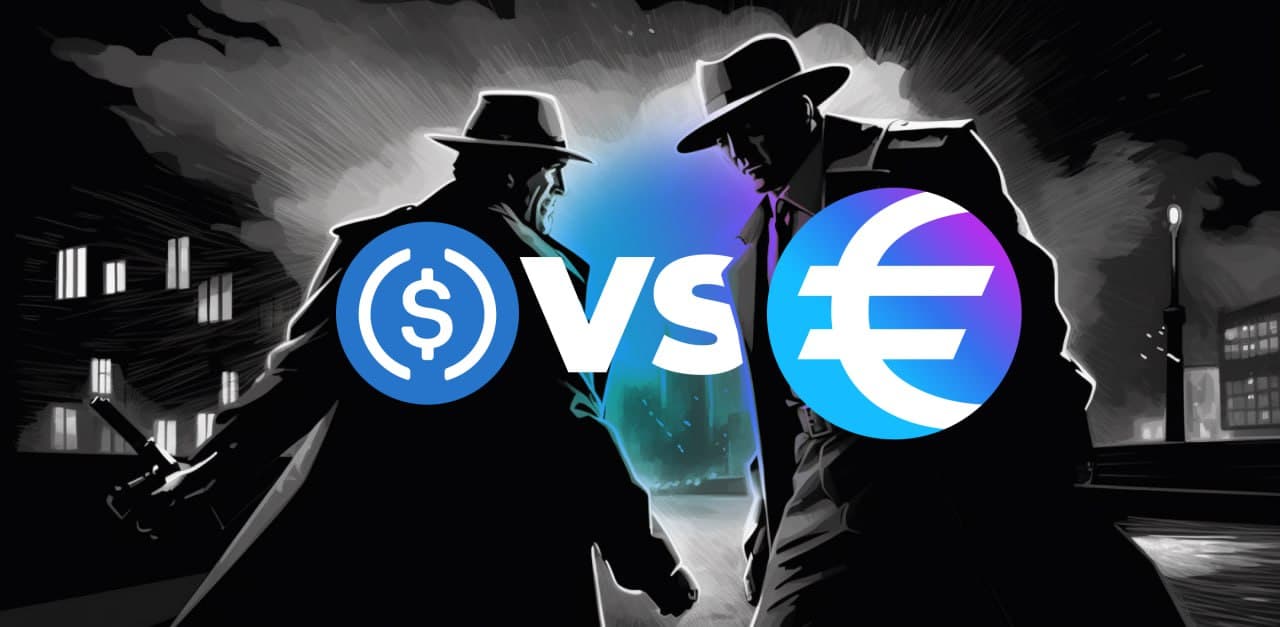As has been known for some time, Stablecoins are becoming increasingly popular in the blockchain sector because, unlike normal cryptocurrencies, their value is pegged 1:1 to that of a given fiat currency.
This feature makes them stable and therefore a viable alternative as a means of payment. It is no coincidence that central banks are also studying the stablecoin phenomenon and expect to increasingly promote their use.
Specifically, today we will compare two major stablecoins, EURS and USDC, and try to understand their main characteristics, their main strengths and their limitations, if any.
Summary
EURS: Europe’s Leading Euro-Backed Stablecoin
EURS is the largest euro-backed digital asset, launched by STASIS in 2018. EURS combines the benefits of the euro fiat, the second most traded currency in the world, with the transparency, immutability and efficiency of the blockchain.
In fact, the stablecoin is supported by an ecosystem of liquidity providers, custodians, exchanges and payment platforms. Specifically, EURS is an ERC/EIP20 token and the first stablecoin to introduce delegated payments on the Ethereum network.
Thanks to these features, with EURS, users no longer have to pay GAS fees to transfer money, and instead can pay transaction fees in EURS or any other digital asset supported by the STASIS wallet, which is a huge improvement in the user experience.
In addition, STASIS enjoys the status of a trusted stablecoin provider because it has developed a proven process for interacting with traditional financial systems.
Ease of use, lack of volatility, multichain support and maximum financial transparency have over the years helped to consolidate user trust in EURS, which is currently active on the five most popular blockchains and more, with more planned for 2023.
In addition, STASIS has undergone rigorous regulatory and AML audits, including financial audits by BDO and AML audits by Grant Thornton.
Specifically, STASIS EURS has processed over €5.5 billion and no bank has ever refused to do business with the company.
Furthermore, EURS’ compatibility with the traditional financial system allows professional investors to access the cryptocurrency market in a similar way to how they operate in traditional financial systems.
To this end, STASIS is working with SCB.io, the Swiss company that provides on/off ramp services.
In addition, the company maintains direct economic relations with central banks, which means that STASIS’ financial reserves enjoy the highest security and best market conditions, as the exposure to commercial and/or default risks is zero.
In other words, the EUROS token is specifically designed to bridge the gap between the traditional and digital economies by combining the advantages of blockchain technology with the stability of the euro.
The innovation potential of this token is therefore enormous, as it already offers a ‘mass’ approach to the crypto world, making it easier to use and understand.
Comparison with USDC
USDC is a stablecoin, in this case pegged to the US dollar.
Therefore, following the same principle as EURS, USDC also maintains a stable value when the value of other cryptocurrencies fluctuates.
Furthermore, USDC initially operated exclusively on the Ethereum (ETH) blockchain, while it currently also operates on other blockchains, including Solana, Avalanche, Algorand, Cosmos and others.
Just as it works with the euro for EURS, USDC allows users to tokenise the dollar, making it usable in transactions on blockchain, cryptocurrency exchanges and other platforms.
In addition, USDC tokens can be easily exchanged for fiat currency and have been developed by Circle and Centre.
However, although USDC has rarely sinned in its history when it comes to security, it recently had more than one problem following the closure of Silicon Valley Bank after its bankruptcy.
At that point, in March to be precise, the issuer of the Circle stablecoin itself declared that it had $3.3 billion stuck with the commercial bank SVB.
Given that USDC’s total market capitalization was around $43.5 billion, this meant that more than 7.5% of USDC’s reserves were no longer available.
Although the situation has since been resolved, it is inevitable that this statement at the time alarmed more than a few savvy investors, who may have turned their backs on USDC in favour of other stablecoins.
This particular incident with USDC may give a better understanding of why STASIS built a stablecoin infrastructure with central bank accounts, such as ERS, rather than leveraged commercial banks.
These, as we have unfortunately seen with USDC, can be depleted within a day by a ‘violent’ bank run in such a technological world.




